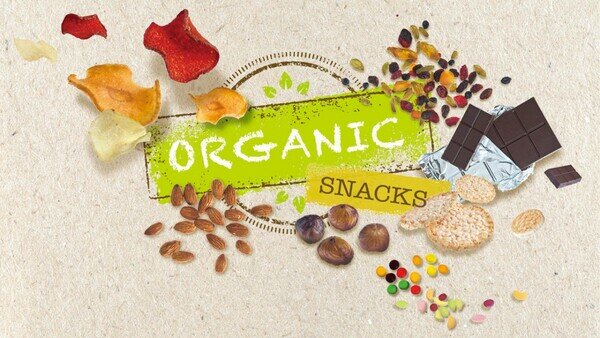Health-conscious consumers are flocking in droves to organic food in recent years. But what does organic certification mean? Is organic food healthier? A Consumer Council report has revealed that such snacks as organic confectionary and dried fruit, though organically certified, their nutritional content is still high in sugar and fat, and not necessary be healthier. Without due restraint in intake, one can equally expose to excessive sugar and saturated fat risky to health. In choosing organic snacks, consumers must not overlook the nutrition label for reference. Furthermore, consumers may be baffled by the wide array of organic certification bodies and logos from different countries or regions, and in the absence of information, consumers may not be able to fully understand the concept behind “organic food”, or to ascertain if the organic food they purchase comes under the relevant certification scope and period before expiry.
The Council noted that Hong Kong has no legislation to clearly define organic food, market oversight and measure for consumer protection are also inadequate. But with organic food becoming more and more popular, its prices generally higher than similar types of food, the Government is urged to set out clear definitions and guidelines on “organic food” by which suppliers could follow and, at the same time, strengthen consumer protection to ensure that organic food is value for money.
Organic food refers broadly to food products that follow a set of organic agriculture methods in production, handling, processing and selling, and duly certified by certification bodies or regulatory authorities at the place of origin. As organic agriculture generally excludes the use of conventional pesticides, artificial fertilizers and chemical additives, it helps improve the ecological environment and nutrient cycle, and reduce the health risks associated with the chemical pesticide or herbicide residues on the products. But consumers must take note that the organic certification refers to the product’s plantation or production processes, but not only the final quality and safety performance of the product concerned. Findings from the Council’s test on vegetables has detected pesticide residues on organic products.
The Council collected from the market 30 popular samples of snacks labeled with “organic”, comprising 6 chocolates, 3 candies, 2 potato chips, 5 rice cakes, 4 nuts, 3 chestnut and 7 dried fruits, to examine their nutrition labels and organic certification logos.
Nutrition ingredient labeling
The Council stressed that not all foodstuffs with organic ingredients are healthier. Some organic chocolate products may use organic coconut oil or organic palm oil in place organic cocoa butter that contains a high proportion of saturated fats, but such organic food ingredients contain even higher saturated fat than cocoa butter. Should consumers misperceive all organic chocolate products containing lower saturated fat and indulge excessively, they run the risk of increased bad cholesterol (LDL) in the blood and heart diseases.
Organic certification logos
The examination of the 30 models of organic snacks has counted 15 logos related to organic certification. They are mostly from the European Union (EU) (9 models) and the US Department of Agriculture (USDA) (12 models). The rest included logos from Australia, New Zealand, Japan and Korea. Some even bore logos from more than 1 certification bodies. Consumers who are in favor of organic food can access the websites of related certification bodies for more details, as an effort to empower them for self-protection.
In the collection of information and data on organic certification of the snack samples from their agents, the Council found in the returns 29 samples of certification information or certificates do not list out brand or name of the snack concerned. On a certificate on a product only the company name of the certification body and the type of product were stated. The Council considers the certification body or the food producer should take one step further to enhance the transparency of organic certification information to facilitate consumers in checking and verifying if the organic food products they purchase are actually from related certification bodies.
Currently, different requirements are imposed on the standards for organic certification. Among which more common are the organic logos of EU and USDA. The EU has stipulated that organic ingredients must exceed 95% in content to be eligible as organic food, and specify if the food is from a plantation in an EU member nation. The USDA has classified organic food into 4 categories: “100% Organic” must contain entirely of organic ingredients; “Organic” requires at least 95% organic ingredients. Those with 70% or above organic ingredients can be marked “Made with Organic Ingredients”, while those with less than 70% can only list out on the ingredient list the organic ingredients and are not allowed to prominently advertise the word “Organic”.
In Hong Kong, the main certification body, the Hong Kong Organic Resource Centre (HKORC) is accredited by the International Federation of Organic Agriculture Movement (IFOAM), which is a global body in promoting organic agriculture. One of IFOAM main tasks is to devise basic principles for some organic agriculture. The HKORC is responsible mainly for the organic certification of fresh vegetables and fruits, and some farmed fish and processed food. In view of the absence of specific legislation governing organic food, the Council proposes the Government to take reference of overseas experiences in setting out clear “organic food” standards and definitions, and to further the enhancement of information transparency to safeguard consumer rights and interests.
The Consumer Council reserves all its right (including copyright) in respect of CHOICE magazine and Online CHOICE.



